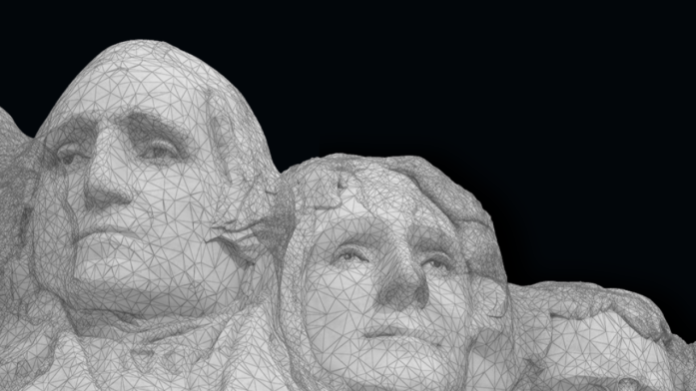Imagine the world 100 years from now. What will your neighbourhood look like? Will all the places you like to visit still be there? What about historic sites and national monuments?
Thanks to people like Peter Dawson, Professor of anthropology and archaeology at the University of Calgary, your favourite places can live on forever – at least in digital form. Dawson is an expert in digital heritage – the art and science of documenting heritage sites in 3D using laser scanning and drone photography.
To document a site, Dawson uses a 3D laser scanner, kind of like the one that scans a barcode at the supermarket. The laser light bounces off any solid surfaces and the scanner records these reflections as millions of data points, accurate to a few millimetres. The points in this 3D cloud are then connected, making a 3D wireframe model of the surface. When combined with high-resolution photographs for colour, the 3D model becomes a stunning virtual copy of the real site.
In collaboration with a non-profit organization called CyArk, some of Dawson’s projects have been turned into beautiful webpages, complete with 3D virtual tours, photographs, interactive maps, and detailed historical descriptions.
Dawson recently partnered with Alberta Culture and Tourism to create 3D digital records of Alberta’s endangered heritage sites including the Okotoks Erratic, also known as Big Rock. Take a virtual tour of the site and see if you can spy the ancient Blackfoot First Nation pictographs carved into the stone.
But Dawson’s passion, the one he’s spent 25 years documenting, is the Canadian Arctic, where climate change is threatening the integrity of many unique Indigenous heritage sites. For Dawson, the Arctic “marks the cultural achievements and resilience of Indigenous peoples” and also “memorialises the ambitions of Euro-North American scientists and explorers.”
Among his Arctic projects is Fort Conger, an old base used for Arctic expeditions in the late 1800s. Now you can explore a site that is on the banks of the Arctic Ocean, 800 km from the nearest settled community, without ever leaving your house.
Dawson believes it’s crucial to capture these records, telling University of Calgary News that heritage sites are “a testament to a particular time in history and when they’re removed you lose that important historical marker.”
In addition to being exciting and educational, Dawson’s work also aids with historical preservation, providing a baseline for monitoring and repairing deteriorating sites.
So 100 years from now, no matter what happens to our planet, our children’s children will be able to look back and see what life was like.








































